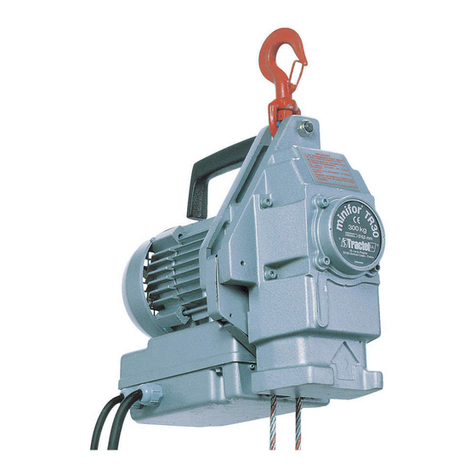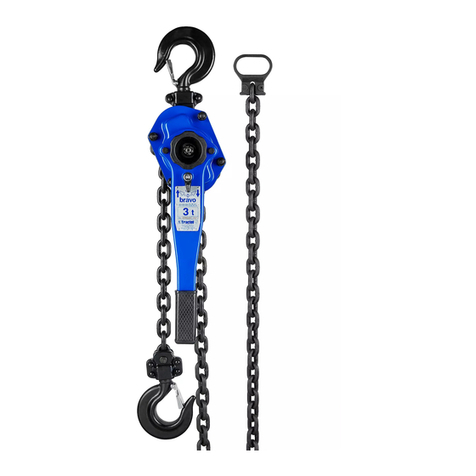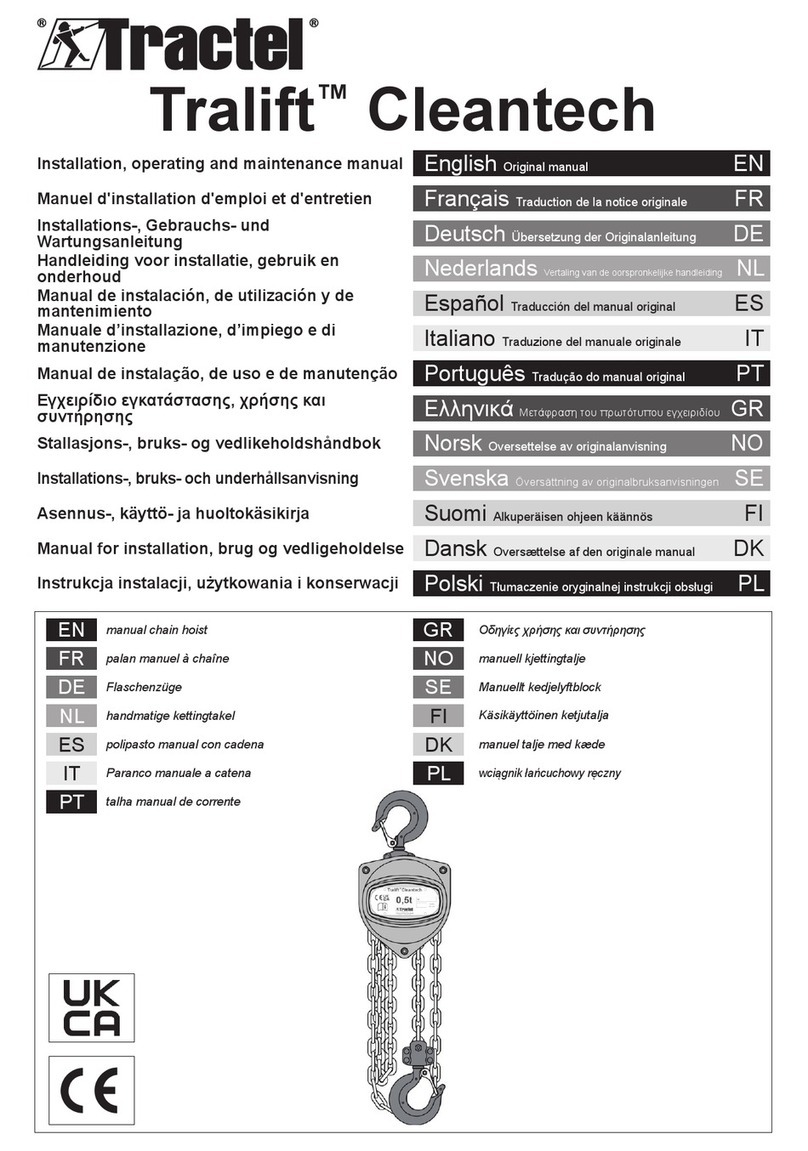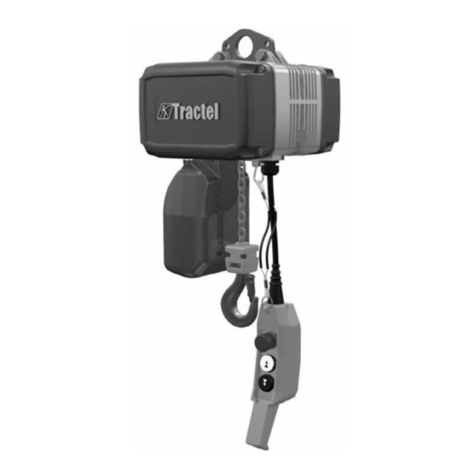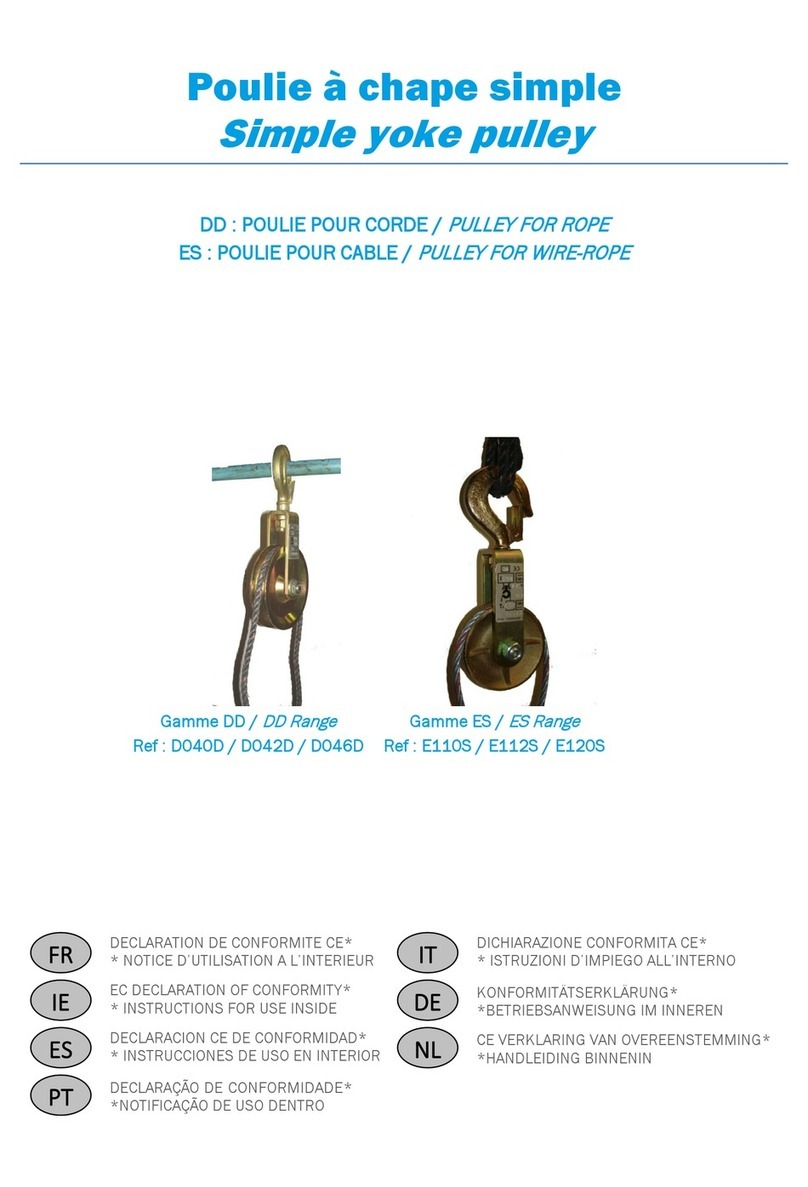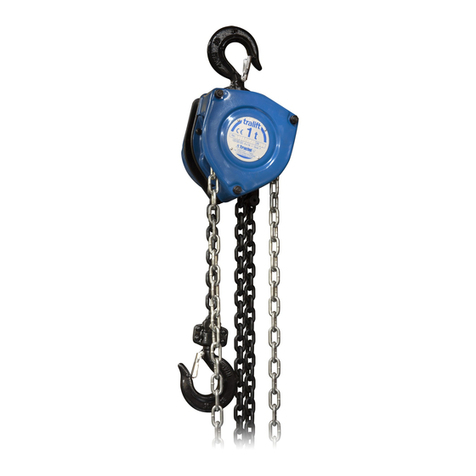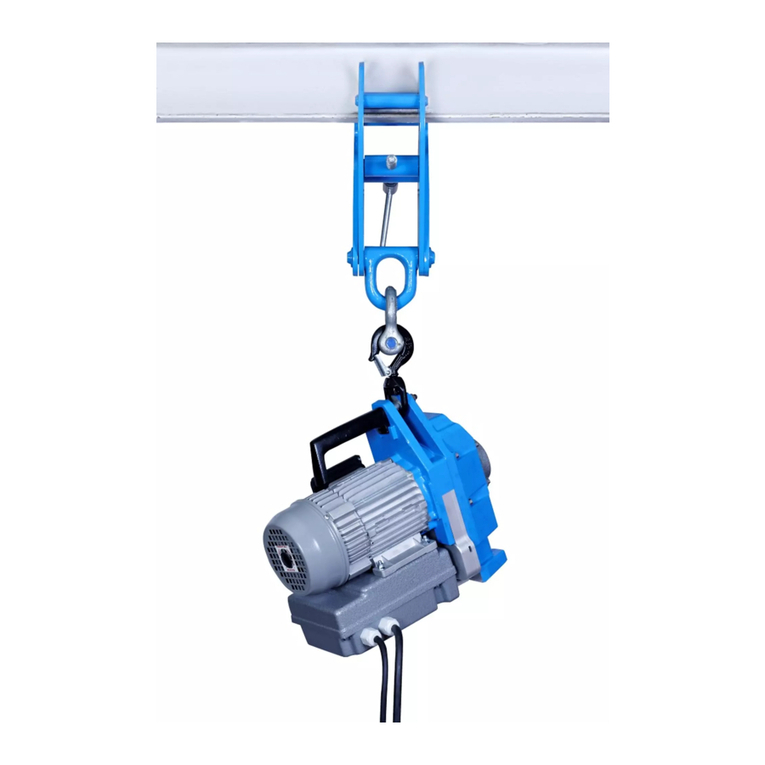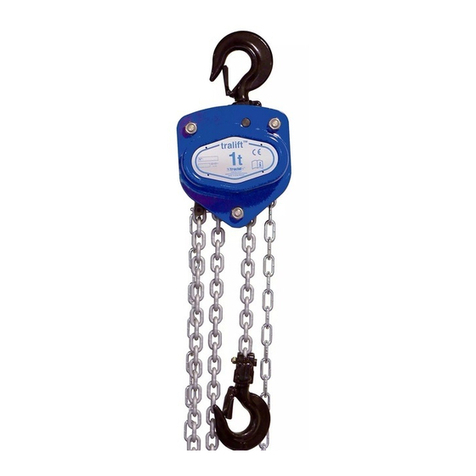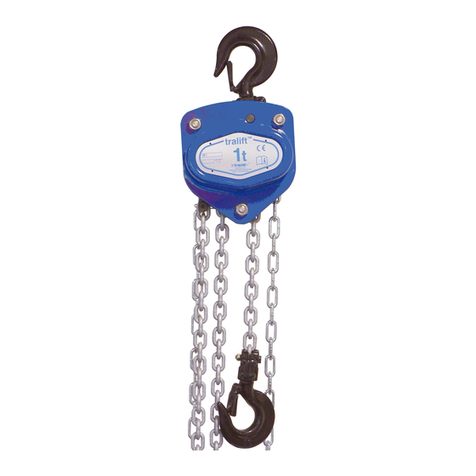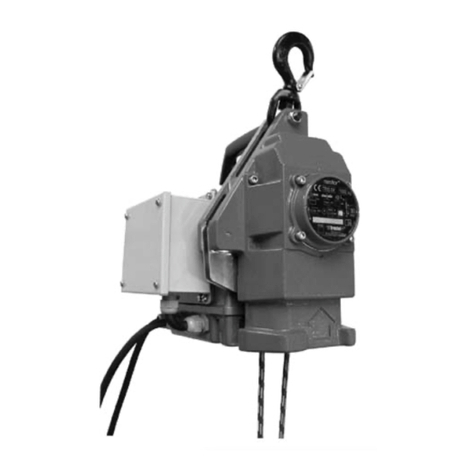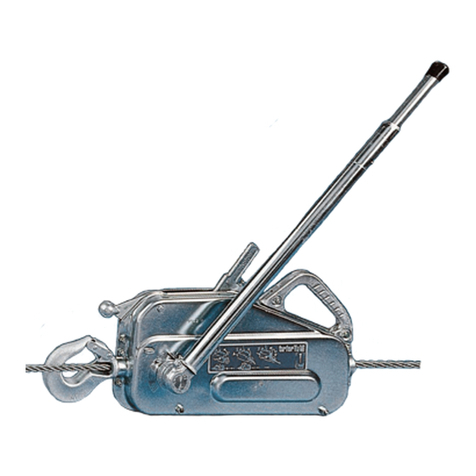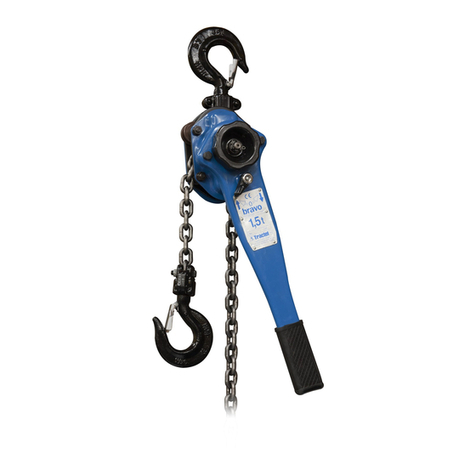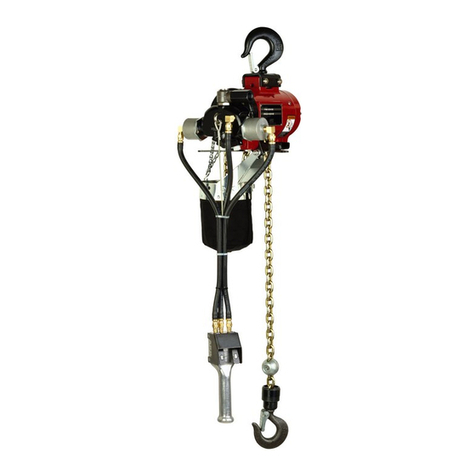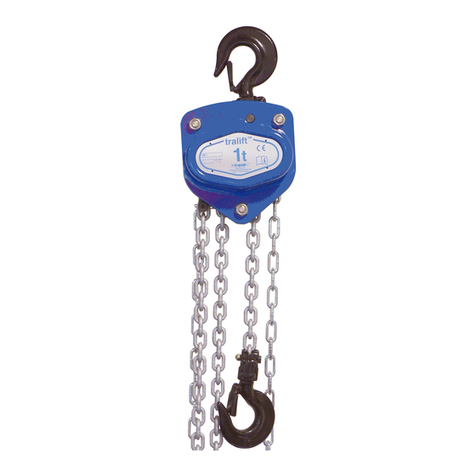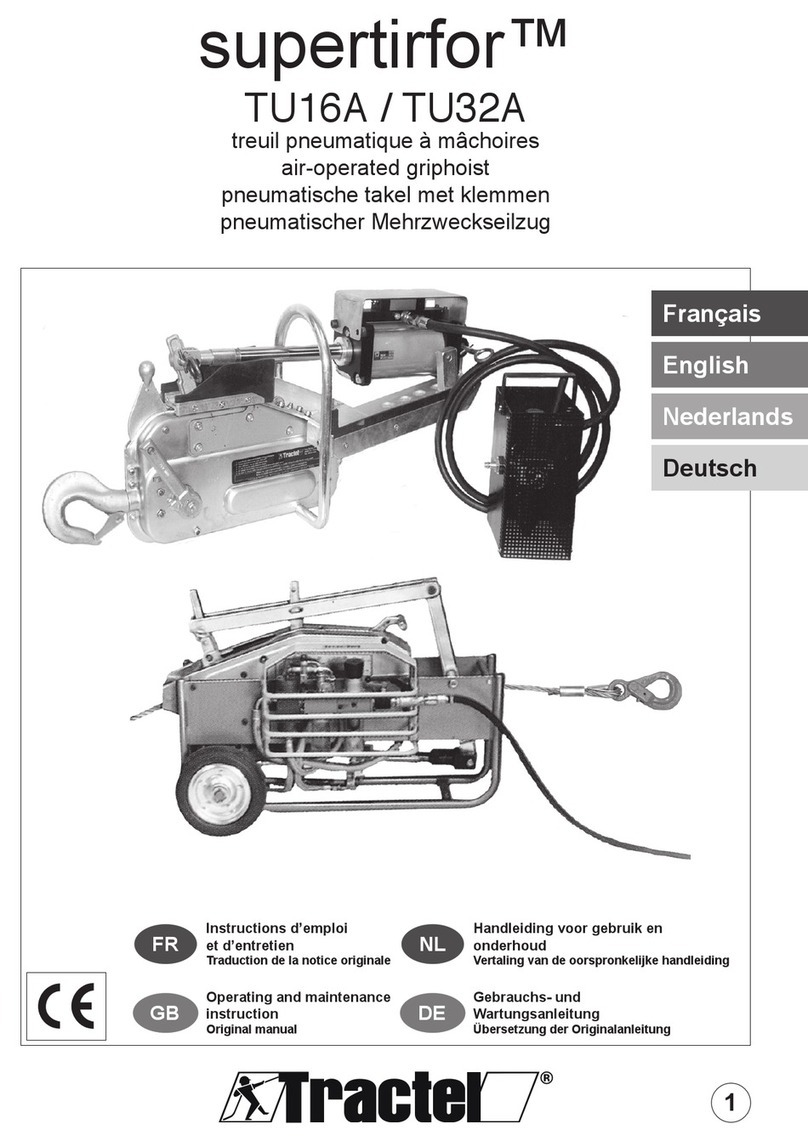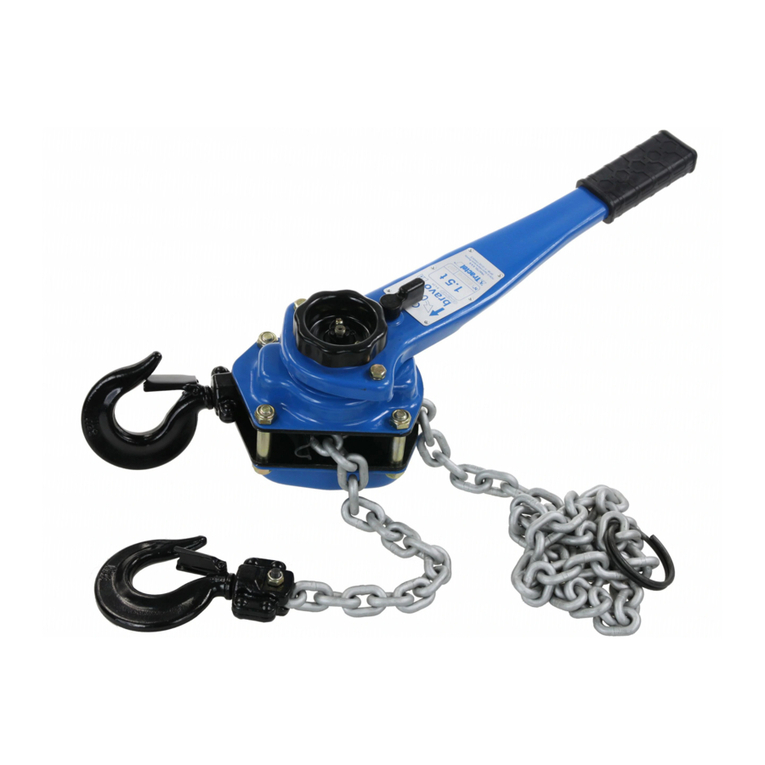
GB
3
GENERA WARNING
1. Before installing and using this unit, to ensure safe, efficient
use of the unit, be sure you have read and fully understood
the information and instructions given in this manual.A copy
of this manual should be made available to every operator.
Extra copies of this manual will be supplied on request.
2. Do not use the unit if any of the plates mounted on the unit
is missing or if any of the information on the plates, as
indicated at the end of the manual, is no longer legible.
For markings on the serial plate, identical plates can be
supplied on request. These must be secured before you
continue to use the hoist.
3. Make sure that all persons operating this unit know perfectly
how to use it in a safe way, in observance of all safety at work
regulations.This manual must be made available to all users.
4. This unit must only be used in compliance with all applicable
safety regulations and standards concerning installation,
use, maintenance and inspection of equipment lifting devices.
5. For all professional applications, the unit must be placed under
the responsibility of a person who is entirely familiar
with the applicable regulations and who has the authority to
ensure the applicable regulations are applied if this person
is not the operator.
6. Any person using the unit for the first time must first verify
that he has fully understood all the safety and correct
operation requirements involved in use of the unit.The first-
time operator must check, under risk-free conditions, before
applying the load and over a limited lifting height, that he has
fully understood how to safely and efficiently use the unit.
7. The unit must only be installed and set into service under
conditions ensuring the installer’ safety in compliance with
the regulations applicable to its category.
8. Each time, before using the unit, inspect the unit for any visible
damage, as well as the accessories used with the unit.
9. Before connecting the hoist to a power source, check that
the power source complies with the characteristics of the hoist
and that it is secure in compliance with applicable regulations.
10. Tractel
®
declines any responsibility for use of this unit in a
setup configuration not described in this manual..
11. Tractel
®
declines any responsibility for the consequences
of any changes made to the unit or removal of parts forming
part of the unit.
12. Tractel
®
will only guarantee operation of the hoist provided
it is equipped with a Minifor
™
synthetic rope as specified in
this manual.
13. If any assembly or disassembly of the hoist not described
in this manual, or any repair performed without Tractel
®
approval and supervision, will release Tractel
®
of its
responsibility, especially concerning the replacement of
genuine parts by parts of a different manufacturer.
14. Any intervention on the Minifor
™
synthetic wire rope for the
purpose of modifying or repairing the synthetic rope without
Tractel
®
approval and supervision will automatically release
Tractel
®
of any subsequent liability to this intervention.
15. The unit must never be used for any operations other than
those described in this manual.The unit must never be used
to handle any loads exceeding the maximum utilization load
indicated on the unit. It must never be used in explosive
atmospheres.
16. The unit must never be used for lifting people.
17. When a load is to be lifted by several units, a technical study
must first be carried out by a qualified technician before
installation of the units.The installation must then be carried
out in compliance with the study, in particular to ensure an
even distribution of the load under appropriate conditions.
Tractel
®
declines any responsibility for the consequences
resulting from use of a Tractel
®
device in combination with
other lifting devices of another manufacturer.
18. During the up-down lifting operations, the user must always
keep the load in view.
19. The unit must be anchored to a fixed point and to a sufficiently
strong structure, keeping in mind the applicable safety
coefficient, to support the working load limit indicated in this
manual.If several units are used, the strength of the structure
and the rigging point must be consistent with the number of
hoists used with respect to their Working load limit.
20. This hoist is designed to perform vertical lifting operations
only, for the purpose of lifting equipment and materials.
Use of the unit for any other purpose, in particular pulling
operations or slanted lifting operations, is strictly prohibited.
21. To ensure safe use of the unit, it should be visually inspected
and serviced regularly. Regularly check for signs of corrosion
depending on the environment in which the hoist is used.
22. Keeping the Minifor
™
synthetic rope in good condition is
essential to safe use of the hoist.The condition of the rope
should be checked each time the hoist is used as indicated
in the “rope” section.Any Minifor
™
synthetic rope showing signs
of damage must be immediately and definitively discarded.
23. Never park or circulate under a load.Access to the area under
the load should be indicated by signs and prohibited.
24. When the unit is not being used, it should be stored in a location
inaccessible to persons not authorized to use the unit.
25. When using the hoist, make sure that the Minifor
™
synthetic
wire rope is constantly tensioned by the load. Pay special
attention to make sure that there are no temporary snags by
an obstacle when lowering as this could result in rupture
of the synthetic rope when the load is released from
its obstacle.
26. ave your hoist periodically checked by an approved Tractel
®
dealer as indicated in this manual.
27. If the unit is to be definitively removed from use, make sure
the unit is discarded in a way which will prevent any possible
use of the unit. All environment protection regulations must
be observed.
IMPORTANT: For professional applications, in particular
if the unit is to be operated by an employee, make sure
that you are in compliance with all safety at work regulations
governing installation, maintenance and use of the
equipment, and more specifically as concerns the required
inspections: verification on commissioning by user, periodic
inspections, and inspections subsequent to disassembly
or repair operations.
